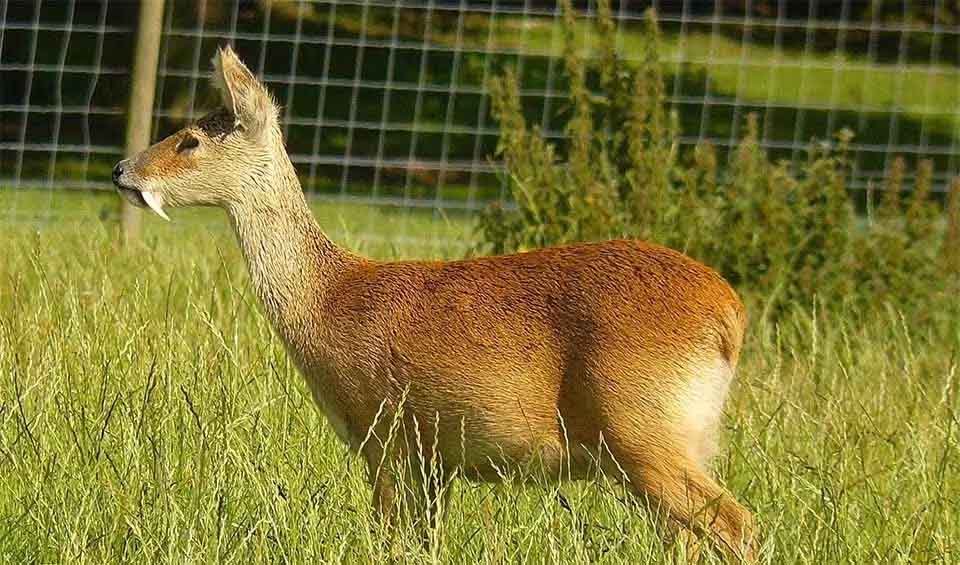As their name suggests, water deer are often found near water, such as in marshes, riversides, and wet meadows. They are excellent swimmers and will often escape predators by diving into the water and swimming away. This ability to live comfortably in wet environments is one of the things that sets them apart from other deer species. They are native to China and Korea and inhabit lowland forests and swamps. However, they have also been introduced to other parts of the world, including the United Kingdom, where small populations have established themselves.
Water deer are solitary animals, meaning they usually live alone except during the breeding season. When they do come together, males can be quite aggressive, using their tusks to fight off rivals. These fights can be intense, but they rarely result in serious injury, as the tusks are more for show than for causing harm. The breeding season typically occurs in late autumn, and after a gestation period of about six months, the female gives birth to up to six fawns, though two to three is more common. The fawns are tiny and have spots on their coats, which help them stay hidden in the tall grass.
Although water deer are not as well-known as other deer species, they play an important role in their ecosystems by helping to control the growth of vegetation. They are herbivores, feeding on grasses, leaves, and other plants. Because they live in wetlands, they often eat aquatic plants, which helps keep these environments healthy and balanced.
Despite their fierce appearance due to their tusks, water deers are quite timid. They prefer to avoid conflict and will flee at the first sign of danger. Their ability to disappear quickly into the water or thick vegetation makes them challenging to spot in the wild.
Distribution
 China
China France
France Korea
Korea North Korea
North Korea United Kingdom
United KingdomAnything we've missed?
Help us improve this page by suggesting edits. Glory never dies!
Suggest an editGet to know me
Terrestrial / Aquatic
Altricial / Precocial
Polygamous / Monogamous
Dimorphic (size) / Monomorphic
Active: Diurnal / Nocturnal
Social behavior: Solitary / Pack / Herd
Diet: Carnivore / Herbivore / Omnivore / Piscivorous / Insectivore
Migratory: Yes / No
Domesticated: Yes / No
Dangerous: Yes / No




